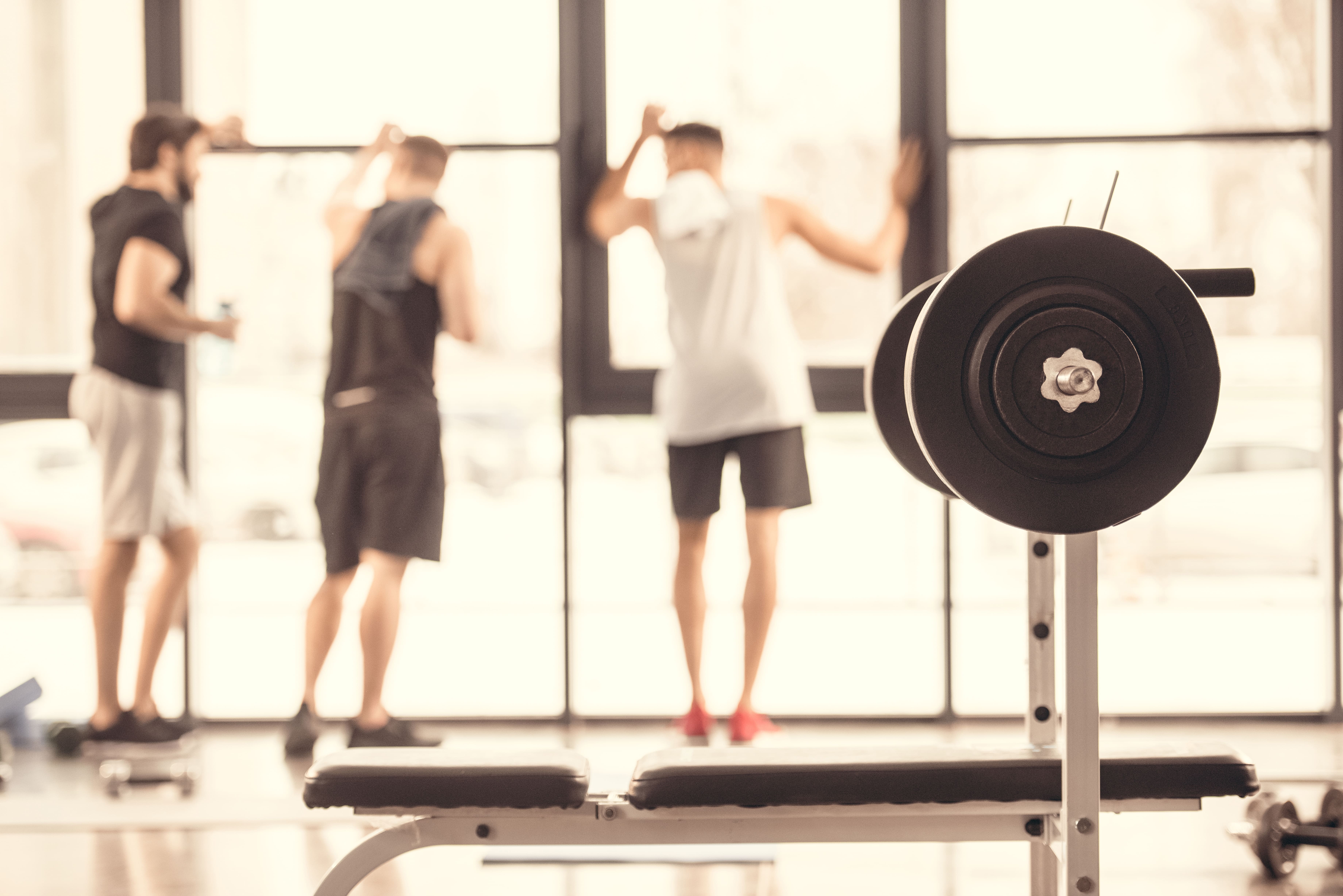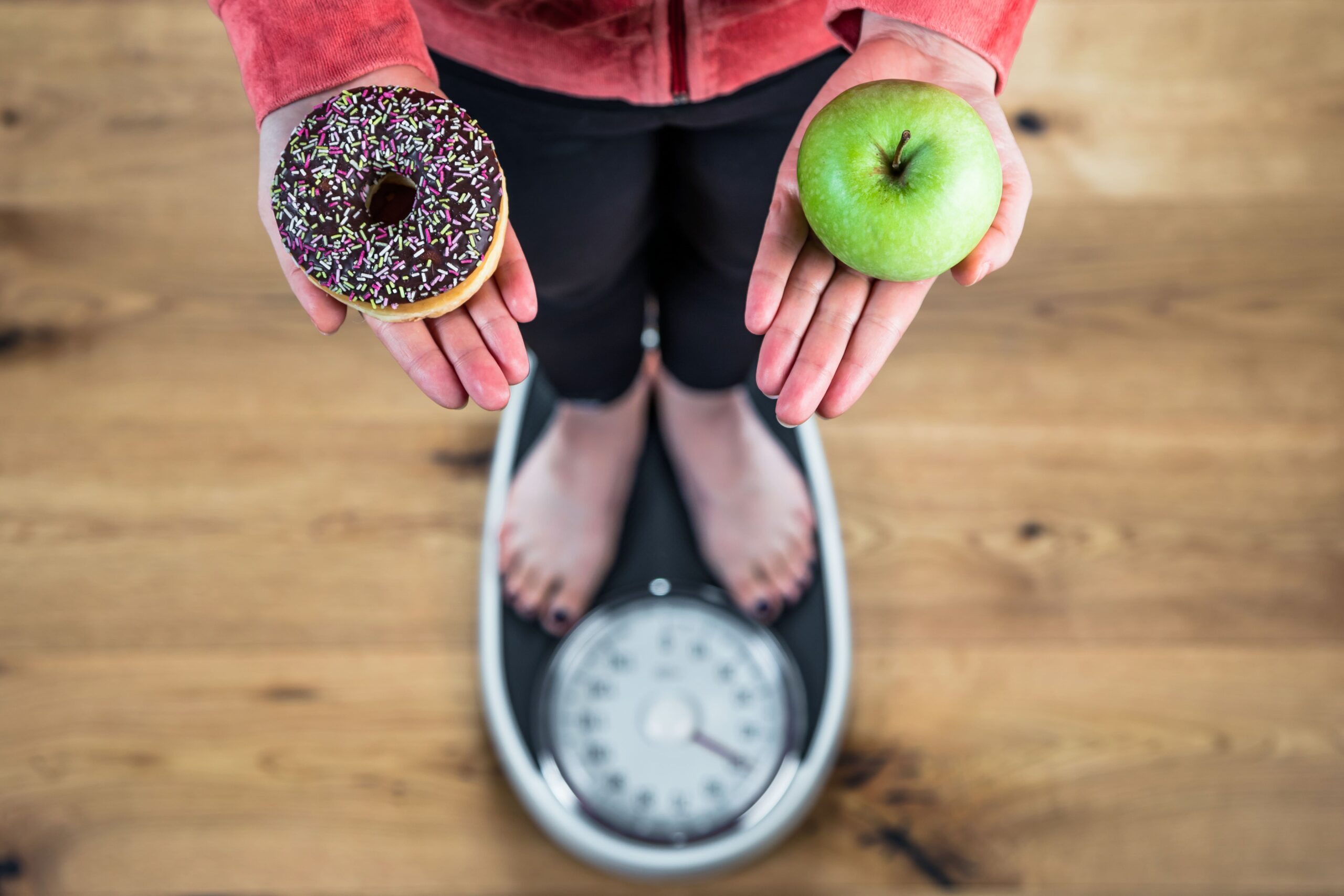Introduction
Fitness for men involves much more than just lifting weights or running on a treadmill. A comprehensive approach to male fitness encompasses strength training, cardiovascular health, nutrition, recovery, and mental well-being.
This guide dives deep into each aspect, providing you with the knowledge and tools to craft a fitness plan tailored to your unique goals and lifestyle.
The Foundation: Strength Training
Strength training forms the cornerstone of any effective men’s fitness regimen. It builds muscle mass, increases bone density, boosts metabolism, and improves overall functionality.
Let’s break down the key components of a solid strength training program.
These exercises engage many muscle groups simultaneously, maximizing muscle activation and hormonal response.
Squats
Squats target your legs, core, and back. They improve lower body strength, flexibility, and balance.
Here’s how to perform a basic squat:
- Stand with feet shoulder-width apart
- Lower your body as if sitting back into a chair
- Keep your chest up and core engaged
- Push through your heels to return to the starting position
As you progress, you can add weight with a barbell or dumbbells.
Deadlifts
Deadlifts work your entire posterior chain, including your back, glutes, and hamstrings. They also engage your core and forearms.
Here’s a quick guide:
- Stand with feet hip-width apart, barbell over your mid-foot
- Hinge at the hips and grip the bar
- Keep your back straight and chest up
- Lift the bar by straightening your legs and standing up
- Lower the bar back down with control
Bench Press
The bench press primarily targets your chest, shoulders, and triceps. Here’s how to do it:
- Lie on a bench with your feet flat on the ground
- Grip the bar slightly wider than shoulder-width
- Lower the bar to your chest
- Push the bar back up to the starting position
Remember to use a spotter when lifting heavy weights.
Other Essential Compound Movements
While the Big Three form the foundation, incorporating other compound movements ensures a well-rounded routine:
- Pull-ups or lat pulldowns for back and biceps
- Overhead presses for shoulders and triceps
- Rows for back and biceps
- Lunges for legs and balance
Progressive Overload: The Key to Continuous Gains
Progressive overload involves gradually increasing the demands on your muscles over time. This principle ensures continuous improvement and prevents plateaus.
Here are some ways to apply progressive overload:
- Increase weight: Add small increments of weight to your lifts
- Increase reps: Perform more repetitions with the same weight
- Increase sets: Add an extra set to your exercises
- Decrease rest time: Shorten the rest periods between sets
- Improve form: Focus on perfecting your technique
Remember, progress isn’t always linear. Some weeks you might lift heavier, while others you might focus on form or endurance.
Isolation Exercises: Filling in the Gaps
While compound movements should form the bulk of your routine, isolation exercises have their place. They target specific muscles and can help address imbalances or aesthetic goals.
Some effective isolation exercises include:
- Bicep curls
- Tricep extensions
- Leg extensions
- Calf raises
- Lateral raises for shoulders
Aim to include a mix of compound and isolation exercises in your routine, with a greater emphasis on compound movements.
Cardiovascular Fitness: More Than Just Running
Cardiovascular exercise plays a crucial role in overall fitness, heart health, and even muscle recovery. However, it doesn’t have to mean endless hours on the treadmill.
High-Intensity Interval Training (HIIT)
HIIT combines short bursts of intense exercise with periods of rest or low-intensity activity. This approach offers several benefits:
- Time efficiency: A typical HIIT session lasts 15-30 minutes
- Improved cardiovascular fitness
- Increased fat burning, even post-workout
- Preservation of muscle mass
A sample HIIT workout might look like this:
- Warm-up: 5 minutes of light jogging
- 30 seconds of sprinting
- 30 seconds of walking
- Repeat steps 2-3 for 15-20 minutes
- Cool-down: 5 minutes of light jogging or walking
You can apply the HIIT principle to various exercises, including cycling, swimming, or bodyweight movements like burpees and mountain climbers.
Steady-State Cardio
While HIIT offers many benefits, steady-state cardio still has it’s place in a well-rounded fitness routine. It can improve endurance, help with recovery, and provide mental health benefits.
Aim for 2-3 sessions of 30-45 minutes per week, engaging in activities like:
- Jogging
- Cycling
- Swimming
- Rowing
- Brisk walking
The key is to find cardiovascular activities you enjoy, making it easier to stick to your routine.
Nutrition: Fueling Your Fitness Journey
A solid nutrition plan supports your fitness goals, whether you’re looking to build muscle, lose fat, or improve overall health. Let’s break down the key components of a balanced diet for men’s fitness.
Protein: Building Blocks for Muscle
Protein plays a crucial role in muscle repair and growth. Aim for 1.6 to 2.2 grams of protein per kilogram of body weight daily.
Good sources include:
- Lean meats (chicken, turkey, lean beef)
- Fish (salmon, tuna, tilapia)
- Eggs
- Dairy products (Greek yogurt, cottage cheese)
- Plant-based options (lentils, beans, tofu, tempeh)
Spread your protein intake throughout the day for optimal absorption and utilization.
Carbohydrates: Energy for Performance
Carbohydrates provide energy for high-intensity activities and help replenish glycogen stores. Focus on complex carbs such as:
- Whole grains (brown rice, quinoa, oats)
- Sweet potatoes
- Fruits
- Vegetables
Adjust your carb intake based on your activity level and goals. Those engaging in intense training may need more carbs, while those focusing on fat loss might reduce their intake slightly.
Fats: Essential for Hormonal Balance
Healthy fats play a crucial role in hormone production, including testosterone. Include sources of healthy fats in your diet:
- Avocados
- Nuts and seeds
- Olive oil
- Fatty fish (salmon, mackerel)
- Egg yolks
Aim for about 20-30% of your total calories from healthy fats.
Hydration: The Often Overlooked Nutrient
Proper hydration is essential for optimal performance and recovery. Aim for at least 3-4 liters of water per day, adjusting based on your activity level and climate.
Consider these hydration tips:
- Drink water throughout the day, not just during workouts
- Monitor your urine color (pale yellow shows good hydration)
- Consume electrolyte-rich foods or drinks during intense or prolonged exercise
Meal Timing and Frequency
While total daily intake is most important, meal timing can improve performance and recovery:
- Pre-workout: Consume a meal containing carbs and protein 2-3 hours before exercise
- Post-workout: Have a protein and carb-rich meal within 1-2 hours after training
- Throughout the day: Spread your meals evenly, aiming for 3-5 meals per day
Recovery: The Often Overlooked Component
Recovery plays a crucial role in fitness progress. It’s during rest periods that your body repairs tissues, builds muscle, and adapts to the stress of exercise.
Sleep: Your Secret Weapon
Quality sleep is essential for recovery, hormone regulation, and overall health. Aim for 7-9 hours of sleep per night.
To improve sleep quality:
- Stick to a consistent sleep schedule
- Create a dark, cool sleeping environment
- Limit screen time before bed
- Avoid caffeine in the late afternoon and evening
- Consider relaxation techniques like meditation or deep breathing
Active Recovery
On rest days, engage in light activities to promote blood flow and aid recovery:
- Walking
- Swimming
- Yoga
- Light cycling
- Stretching
These activities can help reduce muscle soreness and maintain flexibility without adding significant stress to your body.
Foam Rolling and Mobility Work
Incorporate foam rolling and mobility exercises into your routine to improve flexibility, reduce muscle tension, and prevent injuries:
- Use a foam roller on major muscle groups for 1-2 minutes each
- Perform dynamic stretches before workouts
- Include static stretching or yoga sessions on rest days
Stress Management
Chronic stress can hinder recovery and progress. Implement stress-reduction techniques such as:
- Meditation or mindfulness practices
- Deep breathing exercises
- Regular outdoor activities
- Hobbies and social connections
Putting It All Together: Sample Weekly Plan
Here’s an example of how to structure a balanced fitness plan:
Monday: Upper Body Strength + HIIT
- Bench press: 4 sets of 6-8 reps
- Rows: 4 sets of 8-10 reps
- Overhead press: 3 sets of 8-10 reps
- Pull-ups or lat pulldowns: 3 sets of 8-10 reps
- 15 minutes of HIIT (e.g., burpees, mountain climbers, high knees)
Tuesday: Lower Body Strength
- Squats: 4 sets of 6-8 reps
- Deadlifts: 4 sets of 6-8 reps
- Lunges: 3 sets of 10-12 reps per leg
- Calf raises: 3 sets of 15-20 reps
Wednesday: Steady-State Cardio + Core
- 30-45 minutes of moderate-intensity cardio (jogging, cycling, or swimming)
- Core circuit: planks, Russian twists, leg raises (3 rounds)
Thursday: Full Body Strength + HIIT
- Deadlifts: 3 sets of 6-8 reps
- Bench press: 3 sets of 8-10 reps
- Squats: 3 sets of 8-10 reps
- Pull-ups or rows: 3 sets of 8-10 reps
- 15 minutes of HIIT (e.g., sprint intervals, kettlebell swings)
Friday: Upper Body Hypertrophy
- Incline dumbbell press: 4 sets of 10-12 reps
- Cable flyes: 3 sets of 12-15 reps
- Lateral raises: 3 sets of 12-15 reps
- Tricep pushdowns: 3 sets of 12-15 reps
- Bicep curls: 3 sets of 12-15 reps
Saturday: Active Recovery
- 45-60 minutes of yoga or light hiking
Sunday: Rest
- Focus on sleep, relaxation, and meal prep for the week ahead
Remember, this is just a template. Adjust based on your schedule, goals, and recovery needs.
Common Pitfalls and How to Avoid Them
Overtraining
Symptoms of overtraining include persistent fatigue, decreased performance, and increased susceptibility to illness. To avoid overtraining:
- Listen to your body and take rest days when needed
- Gradually increase training volume and intensity
- Ensure adequate sleep and nutrition
- Consider periodization in your training plan
Neglecting Mobility and Flexibility
Poor mobility can lead to improper form and increased injury risk. Incorporate mobility work into your routine:
- Perform dynamic stretches before workouts
- Include yoga or dedicated stretching sessions weekly
- Use foam rollers and massage tools regularly
Inconsistency
Consistency yields results. To maintain consistency:
- Set realistic goals and expectations
- Find a routine that fits your schedule
- Track your progress to stay motivated
- Consider finding a workout partner or joining a fitness community
Ignoring Proper Form
Proper form prevents injuries and ensures you’re targeting the right muscles. To improve form:
- Start with lighter weights to master technique
- Consider working with a qualified personal trainer
- Use mirrors or video recordings to check your form
- Focus on mind-muscle connection during exercises
Comparison Trap
Comparing yourself to others can be demotivating and unrealistic. Instead:
- Focus on your own progress and improvements
- Set personal goals based on your starting point
- Remember that fitness is a personal journey
Adapting Your Plan as You Progress
As you become more advanced, consider incorporating these techniques:
Periodization
Periodization involves cycling between different training intensities and volumes. This approach can help prevent plateaus and improve performance.
Types of periodization include:
- Linear periodization: Gradually increasing intensity while decreasing volume
- Undulating periodization: Varying intensity and volume more frequently
Sport-Specific Training
If you have particular athletic goals, incorporate exercises and drills specific to your sport. This might include:
- Plyometrics for explosive power
- Agility drills for sports requiring quick direction changes
- Sport-specific movement patterns and skills practice
Advanced Training Techniques
As you progress, you might explore techniques like:
- Drop sets: Performing a set to failure, then immediately reducing the weight and continuing
- Supersets: Pairing two exercises back-to-back with minimal rest
- Tempo training: Manipulating the speed of repetitions for different muscle fiber recruitment
Nutrition Periodization
Just as you periodize your training, consider cycling your nutrition:
- Higher carb intake during intense training phases
- Slight calorie surplus during muscle-building phases
- Moderate calorie deficit during fat loss phases
Remember to make adjustments gradually and monitor your body’s response.
Frequently Asked Questions
How often should men strength train?
Aim for 3-4 strength training sessions per week, allowing for adequate recovery between workouts.
What’s the best diet for building muscle?
A diet high in protein (1.6-2.2g per kg of body weight), with adequate carbs for energy and healthy fats for hormone production, supports muscle growth.
Can cardio help with muscle building?
Moderate cardio can improve cardiovascular health and aid recovery without hindering muscle growth. Excessive cardio may interfere with muscle gains.
How much protein do men need daily?
Most active men benefit from 1.6-2.2 grams of protein per kilogram of body weight daily.
Is it necessary to take supplements?
While a balanced diet can provide most nutrients, some supplements like whey protein, creatine, and multivitamins can be useful for some men.
How long does it take to see fitness results?
You may notice strength improvements within a few weeks, while visible changes in muscle mass or body composition typically take 8-12 weeks of consistent training and nutrition.
Can older men still build muscle?
Yes, men can build muscle at any age with proper nutrition and resistance training, although the rate of muscle growth may slow with age.
How important is sleep for fitness?
Sleep is crucial for recovery, muscle growth, and overall health. Aim for 7-9 hours of quality sleep per night.
What’s the best way to lose belly fat?
Spot reduction isn’t possible. Focus on overall fat loss through a calorie deficit, strength training, and cardio exercise.
How can I increase testosterone naturally?
Regular strength training, adequate sleep, stress management, and a balanced diet with healthy fats can help support healthy testosterone levels.
Key Takeaways
- Focus on compound movements for efficient strength gains
- Incorporate both HIIT and steady-state cardio for overall fitness
- Prioritize protein intake and balanced nutrition
- Don’t neglect recovery – it’s essential for progress
- Be consistent with your routine, but flexible enough to adapt as needed
- Listen to your body and avoid overtraining
- Set realistic goals and track your progress
- Remember that fitness is a lifelong pursuit – enjoy the process!



